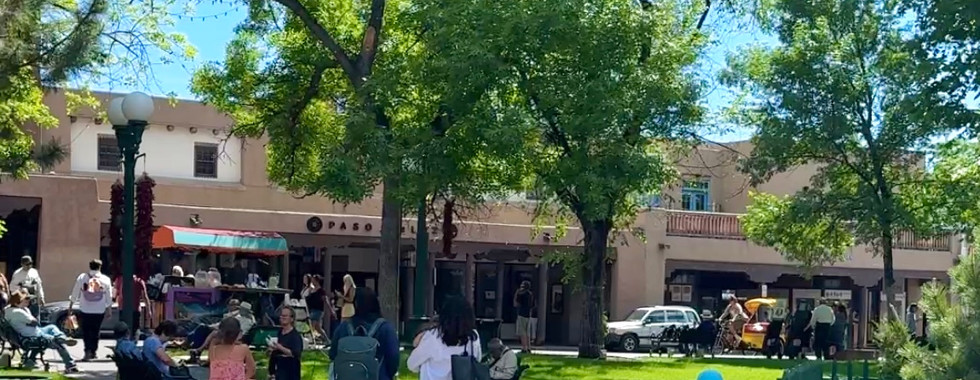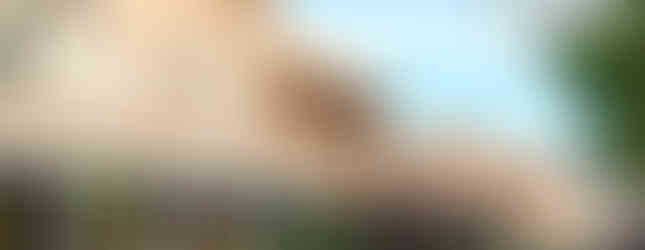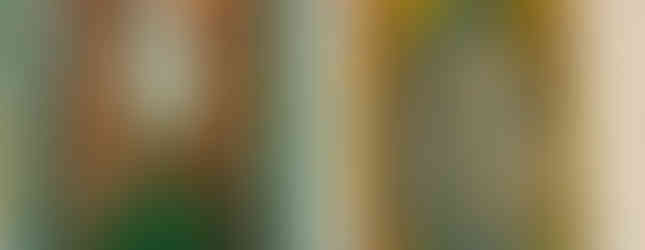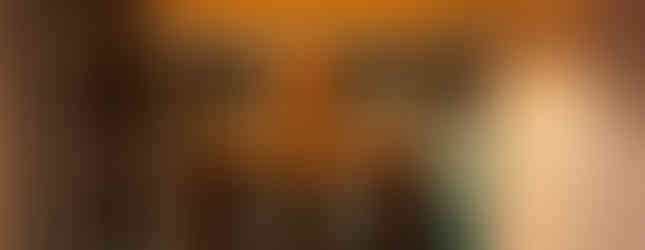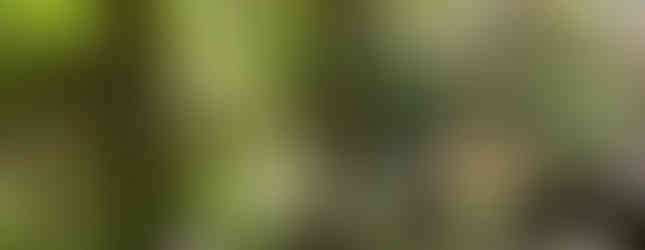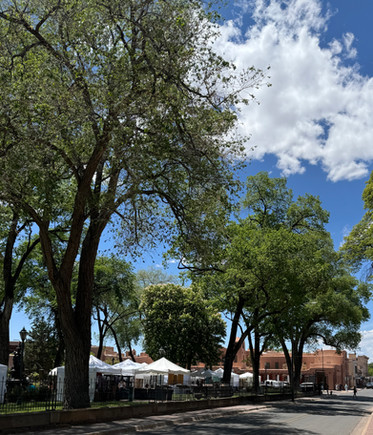The City Different: Exploring Historic Downtown Santa Fe
- Kimberly Gentry

- Feb 23
- 13 min read
Updated: Aug 25
Santa Fe, N.M, dubbed “The City Different,” lives up to its nickname. From historic sites and deep rooted traditions to a vibrant arts scene and incredible landscapes, Santa Fe is a unique, bucket-list destination.

Santa Fe is the oldest and highest (approx. 7,000 feet above sea level) state capital in the U.S. The city was settled by Spanish explorer, Don Pedro de Peralta, between 1609 and 1610 — long before the Pilgrims reached Plymouth Rock.
The area’s long history reaches even further back with Pueblo Indian villages between 1050 to 1150, although these sites were abandoned at least 200 years before the Spanish arrived, according to the city's economic promotional arm, Tourism Santa Fe.
As the city grew and evolved, traditions were pushed forward. Today, Santa Fe is a city that perfectly blends old and new. Modern and historic. Nothing represents this better than the city’s cultural heartbeat — the historic downtown. If you only have time for a short visit to Santa Fe, this is where to spend it.
Santa Fe’s historic downtown is extremely walkable and every block is filled with something interesting to explore. The Plaza, the center of Santa Fe’s downtown area for more than 400 years, is a public square complete with shady trees and gathering places. An eclectic mix of shopping, restaurants, galleries and historic sites surround the Plaza and continue onto connecting streets and blocks. Pueblo-Spanish architecture is a hallmark throughout downtown and adds to the charm when exploring the area.
The Tourism Santa Fe website has an excellent walking map of the downtown area.
Downtown Santa Fe Must Sees
With its long history and cultural influences, the buildings and architecture of Santa Fe are a must see. Simply walking around the downtown is an enjoyable way to spend the day and certain spots make most everyone's list.
Cathedral Park and Cathedral Basilica of St. Fancis of Assisi — Cathedral Basilica's beautiful front facade and large, landscaped exterior plaza are popular with visitors to Santa Fe. The picturesque cathedral opened in 1887, but the Catholic church’s history on the site dates back to an adobe church built the same year Santa Fe was founded, according to the parish's online history.

Numerous church buildings were built and replaced on the site over the years. An adobe chapel still remains from when the church was rebuilt in 1714 and named for Saint Francis of Assisi, the Patron Saint of Santa Fe. Among its numerous historic features, the cathedral is home to the oldest statue of the Virgin Mary in the U.S.
Cathedral Basilica is an active parish with regular masses. It's open to visitors and operating times are posted on its website. There is also a gift shop.
Next to the Cathedral Basilica, is Cathedral Park. This lovely, tree-filled public park features grassy areas and a wide, stone walkway lined with benches. The park is often the site of markets for artists and craftspeople.
The La Fonda on The Plaza Hotel — If you can, stay at La Fonda. If you can’t, at least stop in for something to eat or drink and enjoy its atmosphere. The hotel with a history that stretches back over 100 years, offers a wonderful experience, and is quintessential Santa Fe.
The hotel is beautiful and thoughtfully designed throughout, but the star is the restaurant, La Plazuela, located just off the main lobby. With its abundance of windows, the dining room is drenched with natural light. Adding to this ambiance is the central water fountain, green flora, and wooden tables surrounded by tall, ladder back chairs adorned with carvings.
The restaurant is an open space, surrounded by large sections of hand painted, glass panels surrounding French doors, so the room is easily admired even if you aren’t dining, but simply exploring the main hotel areas. In the evenings, the adjacent lobby fills with live music from the bar area, The Lounge.
If you stay at the La Fonda, an added bonus are the well appointed rooms with furnishings fitting with the hotel’s Adobe-Spanish style. Our double queen was a huge room with a generous bathroom and ample storage (basically a walk-in closet).
Guests can also sign up for an Art & History Tour of the hotel by a docent. The tour takes about an hour and highlights its history, architecture and collection of contemporary Native American art and hand crafted decor.
Shopping in Downtown Santa Fe
Some of Santa Fe's popular shopping destinations are actually among its interesting historic sites, too. One, in particular, has an incredible connection to WWII and the development of the atomic bomb. But, first, let's focus on that special souvenir or gift you aren't likely to find anywhere else.
No cheap trinkets here, Santa Fe's stores feature well-made, quality items from handmade jewelry to designer clothes. Store offerings can be pricey, which is to be expected for one-of-a-kind items in a town with resorts, but there are a variety of price points to be found.
Around the Plaza — Surrounding the downtown Plaza are a collection of retail stores highlighting contemporary fashion plus western style, decor, craft and history. For example, Maverick’s of Santa Fe sells men’s and women’s western-inspired designer jackets, boots and accessories. Santa Fe Dry Goods, Workshop and Wildlife, on the other hand, features contemporary, global designers, home items and, of course, jewelry.
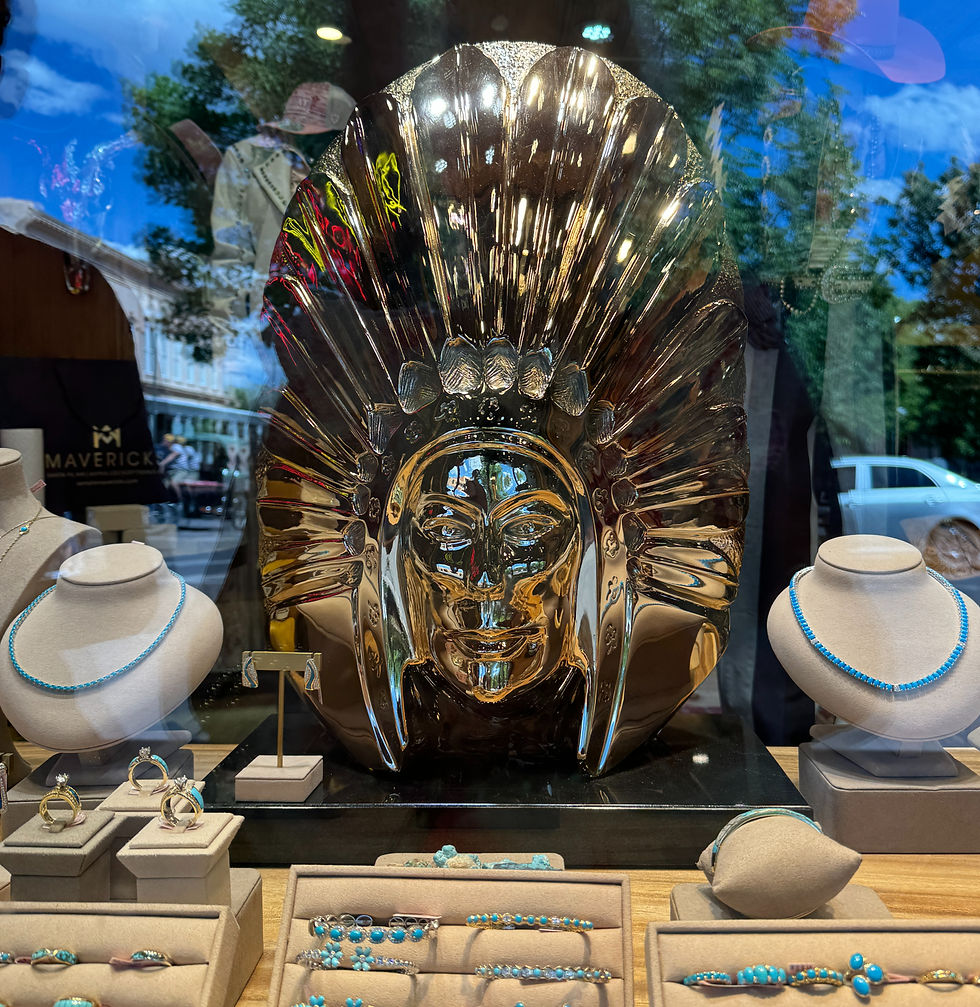
If you want jewelry, especially that New Mexico look of silver and turquoise, there are an abundance of jewelry options in Santa Fe. Practically on every corner is a store selling jewelry.
There are also outdoor artisan markets near the Plaza for buying a truly unique, handcrafted Santa Fe piece (more on that later).
Courtyards Along East Palace Avenue — One of the most interesting shopping experiences in Santa Fe are the courtyards along East Palace Avenue. Former haciendas along a section of this street are now home to specialty retail and dining experiences. The front doors to businesses in Sena Plaza, 125 East Palace Ave., look like any other that might line a street, except step inside and discover these connect to an interior plaza surrounding a lush open air courtyard.
Discover dozens of boutiques and stores with everything from southwestern silver jewelry to traditional New Mexican chimayo (rug) weavings. Some favorite spots include Gusterman Silversmith with precious jewelry, the Zephyr women’s clothing boutique, and Santa Maria Provisions offering home decor and gift items. For kicks ( pun intended) visit Sock Magic featuring all kinds of novelty designs and vibrant foot fashions.

Sena Plaza is just one section of stores within this historic collection of former haciendas stretched along East Palace Avenue. You’ll also find Bahanti Indian Arts featuring sculpture, pottery, vintage pieces, textiles and more. The store/gallery also hosts events such as learning about traditional Indian sand painting and its connection to indigenous farming practices.
There’s also The Rainbow Man, a Santa Fe tradition since the ‘40s. The store specializes in antique and contemporary Native American arts, jewelry, and pottery, as well as Mexican folk art and original work by Edward S. Curtis, a famous photographer of Western life in the early 1900s. The Rainbow Man’s outdoor plaza is filled with an array of paper flowers and the large displays of colorful pottery and ceramics.
Oppenheimer and the Gateway to Los Alamos — Just as you enter The Rainbow Man’s outdoor plaza is a small sign with an arrow that points to the back. It reads “Los Alamos National Laboratory Historical Marker, Back Wall of Courtyard” in reference to the government's top secret Manhattan Project led by Robert Oppenheimer to develop the first atomic bomb during WWII.
The sign is so nondescript and small, most folks probably miss it. If you walk into the plaza and wade past the paper flowers, pottery, and a coffee shop entrance you'll find a historic marker on the wall. The site, which once had the address of 109 East Palace Avenue, was the official check-in office for anyone working at Los Alamos.
Dorothy McKibbin is the Santa Fe resident who worked at the office and handled all the registering and providing of credentials to every scientist, military personnel and their families before they could go on to the Los Alamos site, which was about 30 miles away. The office closed in 1963. Today, the 109 address is assigned to the store Chocolate + Cashmere (yes, they sell gourmet, craft chocolate and cashmere sweaters).
If you're curious and want to know more about the Los Alamos office, then step inside The Rainbow Man and ask about it. They’ll tell you all about the building’s history and how the store’s back office was periodically used by Oppenheimer himself. For more about McKibbin and this unusual part of the city’s history, read this story by the National Park Service.
If you have zero interest in the historical marker, still explore the small courtyard. The ceramics are especially colorful and beautiful, especially the bundles of red, green and yellow peppers.
Food and Drink in Downtown Santa Fe
Santa Fe is famous for its food and drink. From James Beard award winning chefs to generational restaurants serving local comfort food favorites, there is something for everyone. Starring right alongside the meals is the atmosphere and, like the La Plazuela at the La Fonda hotel, the local eateries serve it up just right.
Courtyards and Rooftops — Hungry for lunch? Well, if you're still near Sena Plaza and haven’t tied yourself over with a treat from Chocolate + Cashmere, then head straight for The Shed. Often listed as a must-try place to eat in Santa Fe, The Shed is popular. Thankfully, the friendly staff will put your name on a list and text you when it's your time so you can continue window shopping (the Shed only takes reservations for dinner).
If you want to dine al fresco in the restaurant’s quaint courtyard expect to wait a little longer. The Shed’s interior dining room and bar has a cool vibe and the food tastes just as good there, too. We ordered a ginger limeade, chips and queso, a chicken enchilada plate and a taco plate. All delicious - not completely surprising since the restaurant was honored in 2003 with an "American Classic" award by the James Beard Foundation through secret ballot voting by hundreds of industry professionals. Any recognition by James Beard is a big deal, it's unanimously recognized as an authority on excellent food.
We especially enjoyed trying the posole side dish that comes with the entree plates. Posole (Pozole in Spanish) is a traditional dish of nixtamal corn, which is similar to hominy, that is stewed with pork, red chiles and other spices. Nixtamal corn is prepared through a method that includes soaking corn in an alkaline solution, usually limewater. Beans and a delicious mix of posole with chile turkey sausage went along with the enchiladas that were a perfect combination of chicken, onions and cheese wrapped in blue corn and smothered in red chile sauce.
The interior of The Shed, especially the bar area has an eclectic feel and the entire restaurant is authentic to its hacienda roots, especially some of the low doorways and, of course, the adobe walls. The restaurant’s outside courtyard with tables shaded by red and blue umbrellas is nice and relaxing, but for an even lushier outdoor experience, go next door to La Casa Sena.
The Sena Plaza courtyard is filled with trees, flowers and plant life all surrounding a small water feature. The outdoor seating is nestled among it all, which is especially beautiful at night with twinkle lights and overhead lighting. La Casa Sena, which is a little more refined dining experience, also has indoor seating and a jazz bar.
Santa Fe is famous for its serene mountain views and sunsets. One of the best spots to appreciate those and have a bite to eat is the Bell Tower Rooftop Bar at the La Fonda hotel. Located five stories high, the bar has practically 360 degree views, which always includes Mother Nature’s best show. Although the menu describes the food selection as “light bites,” one or two of the individual selections is plenty to fill you up. The two of us were stuffed after sharing margarita flatbread, watermelon salad, and chips with salsa and guacamole. The Bell Tower is open from May – October, from the afternoon until the sunset concludes.

Coyote Cantina is another spot ranked among the best places to enjoy the sunset and a bird's eye view of downtown Santa Fe. At this rooftop bar and open-air dining area, specialty cocktails and Mexican dishes are the star, including Frito pie (a famous Santa Fe dish), plus fish tacos, enchiladas and more.
Unlike the Bell Tower, the Cantina is open all year and past sunset. Below the Cantina is Coyote Cafe, an upscale restaurant with a modern take on Mexican food that matches the modern design and decor of the restaurant itself.
Thunderbirds Bar & Grill is the only restaurant on the downtown Plaza with an upper deck for dining outside. And, it's open year round. Just next door is the Plaza Cafe with outside dining on a large patio surrounded by plants and hanging flower baskets. There is also inside seating with a more traditional diner-style design. Both Thunderbirds and Plaza Cafe have a casual lunch and dinner menu with American dishes such as burgers and sandwiches plus enchiladas, tacos and other “New Mexican” dishes. The Plaza Cafe is also open for breakfast (try the breakfast burritos!).
Don’t have time for a sit down lunch, there are plenty of places scattered throughout the downtown to grab a quick to-go snack, coffee, ice cream, etc.
Self-Guided Food and Drink Tours — Coyote Cafe and Cantina, The Shed, Thunderbirds and Plaza Cafe are among the restaurants and bars on the Santa Fe Margarita Trail. More than 50 Santa Fe spots are on the trail and ready to prove they serve the best margarita around.
The Margarita Trail is just one of several curated, self-guided tours by the city’s tourism department. Others include: the Breakfast Burrito Tour, the Chocolate Trail, Coffee Lovers Tour, and the Craft Beer and Spirits Tour. To learn about them all, visit here.
Downtown Santa Fe: A Hub for Creativity
It’s almost impossible to talk about Santa Fe without talking about the arts. From fine arts and traditional craft to performances and concerts, the city is home to hundreds of galleries, exceptional museums, performance venues and special art-based events.

Outdoor Markets, Galleries and Museums — One of the things we enjoyed the most about the downtown Santa Fe area was the outdoor artists markets, such as those in Cathedral Park and at the New Mexico History Museum.
As part of the museum’s mission to protect and promote traditional southwestern Native American arts and crafts, artists display and sell their work along the museum’s covered walkway near the historic downtown plaza. Specifically, this is part of the Native American Artisans Program, which includes over 1500 artists.
The museum is a collection of three buildings comprising a single campus downtown. Visitors to the museum can experience a collection of historic and rare objects and photography that tell the history of Santa Fe and New Mexico from Indigenous people through the arrival of the Spanish and Mexican governance to U.S. annexation and modern times. Admission is inexpensive (New Mexico residents $7, nonresidents $12, and free to all under 16 years old). There are also free admission days and discounts for certain groups, such as military.
In Santa Fe there are practically galleries along every street - Patina Gallery on West Palace Avenue, Worrell Gallery on Washington Avenue, San Francisco Street Art Gallery and on and on. When visiting the galleries expect to find art and craft that spans the area's long timeline of creativity from the very old to the very current.

The Georgia O'Keefe Museum, a definite must see for art lovers, is also in downtown Santa Fe. The museum is dedicated to the work of this preeminent modernist painter and transplanted New Mexican resident.
Of the two current exhibits, one examines her repeated use of circles and spirals in her paintings and runs until Oct. 21, 2025. The other, showing until Nov. 2, 2025, explores O'Keefe's life as she evolved and curated her personal and artistic image. The museum is open everyday, except Thursdays. The museum is a popular attraction, so purchasing tickets in advance is recommended.
Located a little further outside the main downtown area is Canyon Road featuring a large collection of galleries, as well as restaurants and boutiques. Plus, there’s Railyard Park. What was once an active railyard has been transformed into a large entertainment and social district with everything from shopping and dining to working studios for artists and galleries housed in former warehouses.
Community Festivals — One of the largest downtown art events is the Santa Fe Indian Market in August. This prestigious event, often dubbed as the greatest art market in the world, is hosted by the Southwestern Association for Indian Arts (SWAIA) and features over 1,000 artists from 200 tribes. SWAIA was founded in the 1920s to support and foster Native Arts, artists, and education. In addition to the outdoor market, there is a juried art competition, a film festival, live music and more.
When it comes to music arts, Santa Fe celebrates in a big way all summer long. The Santa Fe Summer Scene is a free music series with concerts in the historic Plaza, the Railyard and across the city. From June – August, concert goers can enjoy national artists performing everything from rock to hip hop. The Summer Scene also includes free movies.
July 4th brings something a little more quaint — Pancakes on the Plaza. This community event is a 50-year-old tradition organized by the local Rotary Club to celebrate America’s independence and raise money for charity efforts. In addition to made-to-order pancakes and sides, the event brings together vendors, vintage cars and and music performances.
A few blocks from downtown is the site of Santa Fe’s most unusual festival — the Burning of Zozobra. Basically, this long, held and hugely popular Labor Day tradition (2025 marks the 101st) is the burning of a giant, 50 foot tall creature called Zozobra to dispel worries and start along a renewed path.
Zozobra is made of wood, wire, and cloth. It’s stuffed with paper used by people to write down their woes or paper that represents something they want to move on from.
Zozobra can actually move and is considered the world's largest marionette, according to the organizer's website. The Kiwanis hosts the family event to raise money for their charity efforts. There are also a variety of activities surrounding the burning, such as a fun run, live music, kids crafts, and more. To learn more about the tradition of Zozobra, visit here
Exploring Beyond Downtown Santa Fe
The downtown area of Santa Fe is packed with things to do, but it’s just a small portion of what’s available throughout the city. There are spas and wellness-focused businesses, farmer’s markets, distillery tours and tastings, and more especially when it comes to the outdoors.
The city is nestled within an incredible landscape, perfect for hiking, biking, guided experiences, fishing, water activities and other outdoor excursions. Plus, even more festivals and special events throughout the year, such as the Angel Fire Balloon Festival.
The Tourism Santa Fe website has a section dedicated to the outdoors and special events, as well as for tips visiting the city.
This story is part of a series that highlights some of the historic, kitschy and beautiful sites when driving coast-to-coast along 1-40 and Route 66, aka the “Mother Road.” Santa Fe is about an hour north of I-40, but Route 66 originally travelled through the city along the path of the Santa Fe Trail. The city was bypassed for a more direct route early in the road's history.





